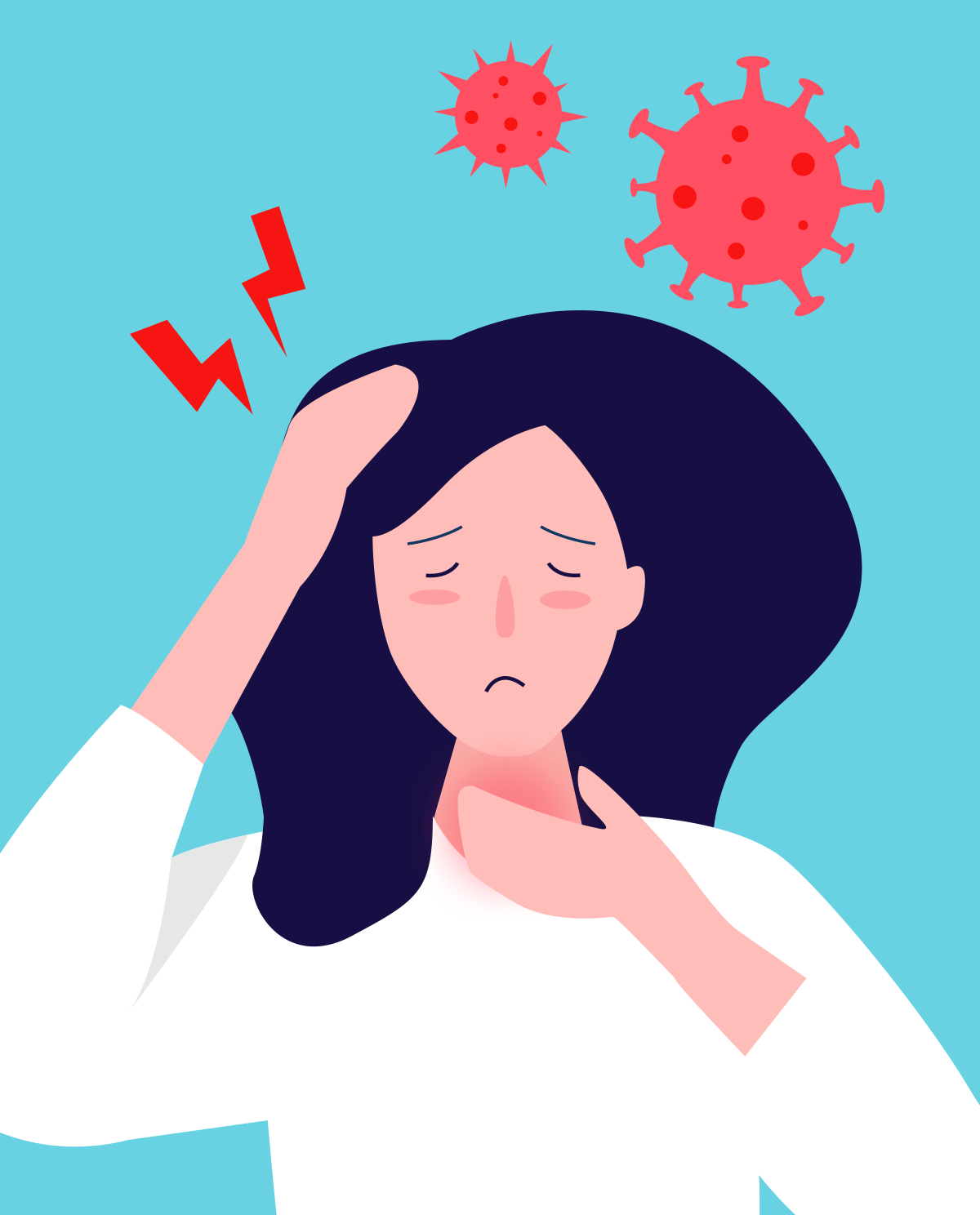A cold is the most common infectious disease occurring in humans, it tends to be found in European climate zones in the autumn and winter months. It is caused by viruses, mainly rhinoviruses (40-50%) and coronaviruses (10-15%). It is estimated that a common cold can be caused by as many as 200 different viruses, which is why we may get sick up to several times a year and it is very difficult to develop appropriate vaccines.
Where did the name "cold" come from?
There is a common misconception that colds are caught after we get very cold or wet, usually outdoors. However, in numerous scientific studies, the relationship between sudden cooling of the body surface and the occurrence of a cold was not confirmed. However, it is recognized that some cold-triggering viruses occur mainly in cold and wet weather. The increase in illness in autumn and winter may also be caused by an increased amount of time spent in closed rooms and close to other people. This especially applies to children returning to school and their parents. According to an alternative hypothesis, the changes in nasal mucus under the influence of cold air and temperature fluctuations correspond to the increased frequency of colds, which facilitate the attack of viruses, weakening the natural mechanisms that protect us against infection.
How do we get infected?
The infection is caused by:
- by droplet - through direct contact with the patient, who by coughing or sneezing sprays small droplets of airway secretions, containing viruses,
- by contact with infected objects - some viruses can survive in the environment (on everyday objects, i.e. door handles, telephones, handrails, etc.) for several hours, then get into the hands of people and then be transferred to the eyes, mouth or nose where infection occurs. That is why hand hygiene is so important in the period of increased cold incidence.
What are the symptoms of a cold?
- A common cold often begins with a period of malaise. Some patients complain during this time that they feel a dry, burning or scratching sensation in their nose.
- In the first days of the disease may be subfebrile, that is, the body temperature reaches a maximum of 38 °C. Fever is more common in children.
- Another symptom is often a sore throat, sometimes there is hoarseness. The sore throat usually goes away after 1-2 days.
- Then there is the runny nose and sneezing. Initially, the watery runny nose becomes denser with time and often has a purulent character (yellow or greenish colour), which often does not indicate bacterial infection and does not require antibiotics. The yellow discoloration of the secretion is caused by the presence of numerous leukocytes (white blood cells) that fight the infection.
- Some patients also have a cough. Usually it is initially dry (without expectoration), then it goes into wet (with expectoration of secretion, usually whitish or yellow).
- Symptoms persist for about 7 days. Usually after 3-4 days, they reach the greatest intensity, and then gradually disappear.
- A runny nose and/or cough may persist in some patients for up to two weeks.
When should you go to the doctor?
A cold can be treated by resting in the privacy of your home and using the methods of our grandmothers and/or pharmacy preparations. However, there are situations in which we must go to the doctor. These include, among others:
- the appearance of dyspnea and/or wheezing attacks,
- fever, if your body temperature exceeds 38 °C,
- increased cough with expectoration of purulent secretion persisting for more than a few days,
- the appearance of a strong and relentless headache, ear or sinuses (nose area, forehead, jaw),
- persistence of symptoms (tiring cough, dense, yellow or greenish purulent catarrh, headache, sinus pain) after 10-14 days or worsening of symptoms after 5-6 days of illness
How can we treat a cold?
- Stay at home.
- Avoid physical exercise, preferably rest in bed.
- Drink lots of liquids, such as non-carbonated mineral water, warm but not hot tea (avoid fizzy drinks and really cold drinks).
- Take medication only if necessary to relieve symptoms. Never use antibiotics without a doctor's recommendation!
- If you have a fever or headache paracetamol. It is safer than other painkillers. Use it temporarily in the event of symptoms, at a dose of 1-2 tablets (500-1000 mg). The effect of the drug persists for 4-6 hours. Do not exceed the dose of 4g/day (8 tablets) or, if we use the drug for more than 2-3 days, the dose of 2.5g (5 tablets). Overdose can cause liver damage. In addition, paracetamol is part of many complex medicines, so check their composition to avoid overdosing.
- If paracetamol does not help, you can take a non-steroidal anti-inflammatory (e.g., ibuprofen, naproxen or aspirin) but cautiously in patients with peptic ulcer disease!
- Ibuprofen - usually one tablet, or 200mg (also "forte" tablets containing 400mg of the drug are available), then, if necessary, you can take another dose every 6 hours. The maximum daily dose is 1.2g (6 tablets of 200mg or 3 tablets of 400mg).
- Naproxen - 1 tablet, i.e. 250-500mg, then, if necessary, 1 tablet every 6-8 hours. The maximum daily dose is 1250mg (5 tablets of 250mg each).
- Aspirin = kwas acetylosalicylowy - 1-2 tablets, i.e. 300-600mg every 4 hours (also "max" substances containing 500mg of the drug are available). The maximum daily dose is 3g (10 tablets of 300mg). Attention! Aspirin should not be used in children <12 years of age due to the risk of Reye's syndrome.
- The nasal congestion and rhinitis are supported by oral medications containing pseudoephedrine (carefully in heart patients!) Or nasal ones containing xylometazoline or oxymetazoline (be careful - never use for more than 7 days!). Short-term relief can come from inhalation of water vapor or saline preparations.
- In case of a sore throat, you can use lozenges available without a prescription at the pharmacy, gargle with saline or sip milk with honey.
- Most preparations for "flu and cold" are a mixture of several drugs discussed above. They do not affect the cold, only temporarily eliminate its symptoms.
- People living with the patient should wash their hands more often and avoid touching their nose, eyes and mouth with their hands.
How can we prevent a cold?
- Moderate exercise should be practiced regularly.
- In the autumn and winter period it is recommended to wear warm clothes.
- During periods of increased incidence, congested places should be avoided, and when at school, work or in public places (e.g. on a tram, in a library or shop), do not touch your mouth and eyes with your hands.
- Avoiding close contact with a person who has a cold is recommended.
- It is necessary to wash your hands often and with soap (15-30 seconds). Alcohol-based disinfectants can also be used.
- Interna Szczeklika 2018 Handbook of Internal Diseases Authors: Piotr Gajewski, Andrzej Szczeklik Publisher: Medycyna Praktyczna
- http://www.mp.pl
- https://www.mp.pl/pacjent/
- https://www.mp.pl/pacjent/grypa/przeziebienie/61668,przeziebienie
- https://www.mp.pl/pacjent/grypa/przeziebienie/61677,najwazniejsze-zalecenia-dla-przeziebionych








